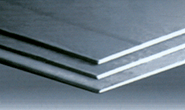Steel Products Prices North America

Comparison Price Indices: Prices Continue to Move
Written by John Packard
January 31, 2016
Flat rolled steel prices continue to move higher this past week, based on what we saw in the indices we follow on a regular basis (SteelBenchmarker reported prices this past week).
The weakest product continues to be hot rolled which has broken above the $400 level as the mills are pushing for $400-$420 per ton. The average of the three indexes referenced below is $405 per ton.
Cold rolled prices moved to an average of $544 per ton up $10 per ton over the prior week.
Galvanized and Galvalume prices both saw strong gains with galvanized being up $20 per ton (.060” G90 is the benchmark item for GI) and $25 per ton for Galvalume (.0142” AZ50 Grade 80 is benchmark used for AZ).
Plate prices rose on the SteelBenchmarker index (SteelBenchmarker reports twice per month) while they remain the same on Platts.
FOB Points for each index:
SMU: Domestic Mill, East of the Rockies.
SteelBenchmarker: Domestic Mill, East of the Mississippi.
Platts: Northern Indiana Domestic Mill.

John Packard
Read more from John PackardLatest in Steel Products Prices North America

Market says cutting interest rates will spur stalled domestic plate demand
Market sources say demand for domestic plate refuses to budge despite stagnating prices.

SMU Price Ranges: Some predict bottom is near as big discounts dry up
Sheet prices were mixed this week as some mills continued to offer significant discounts to larger buyers while others have shifted toward being more disciplined, market participants said.

SMU Price Ranges: Tags mixed as uncertainty weighs on market
SMU’s hot-rolled (HR) coil price held steady this week while prices for other sheet and plate products declined.

Nucor spot HR list price unchanged at $875/ton
Nucor kept its weekly list price for hot-rolled (HR) coil unchanged this week, following a price bump of $10 per short ton (st) last week.

SMU price ranges: Flat-rolled balloon continues to leak
Sheet and plate prices were flat or lower again this week on continued concerns about demand and higher production rates among US mills.

